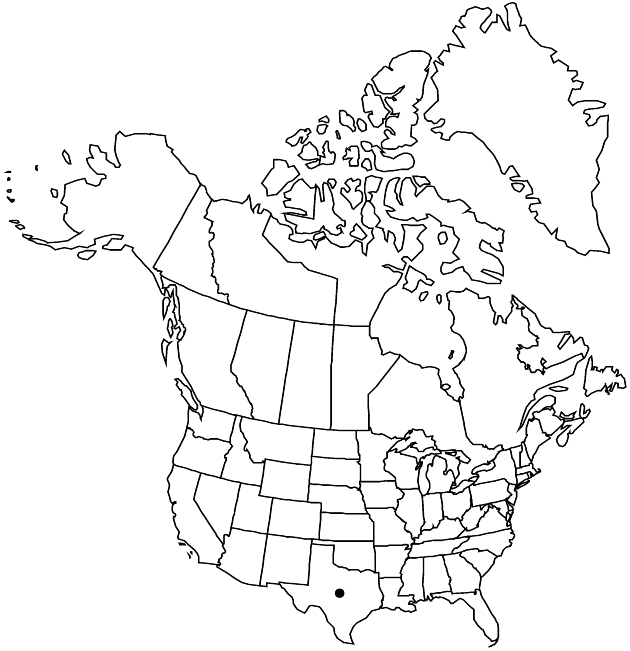Perityle angustifolia
SouthW. Naturalist 4: 204. 1959.
Perennials or subshrubs, 8–35(–70) cm (stems densely leafy); glabrate or puberulent. Leaves: petioles 0–12 mm; blades usually lanceolate, linear, or oblanceolate, rarely ovate, usually 3- or 5-lobed (lobes acute or attenuate; bases cuneate), (5–)15–30 × 2–15 mm, ultimate margins entire, subentire, or laciniate. Heads borne singly or in loose, corymbiform arrays, 5.5–7(–9) × 3.5–5.5(–6) mm. Peduncles 6–50 mm. Involucres narrowly campanulate to campanulate. Phyllaries 12–15, narrowly to broadly lanceolate, 4–5 × 1–2 mm. Ray florets 0. Disc florets 20–33(–50); corollas yellow, tubes 1–1.5 mm, throats narrowly campanulate, 1–1.5 mm, lobes 0.5–1 mm. Cypselae narrowly oblanceolate to linear-oblong, 2–3 mm, margins thin-calloused, puberulent; pappi usually 0, sometimes 1–2 bristles 1.5–2 mm. 2n = 34, ca. 136.
Phenology: Flowering spring–fall.
Habitat: Limestone crevices
Elevation: 300–1300 m
Discussion
Perityle angustifolia occurs in crevices of Cretaceous limestone in west Texas near the Rio Grande and along the eroded, western edge of the Edwards Plateau.
Selected References
None.
